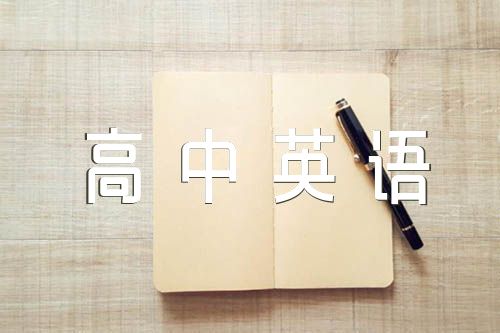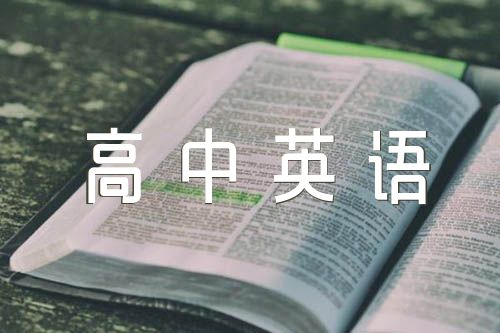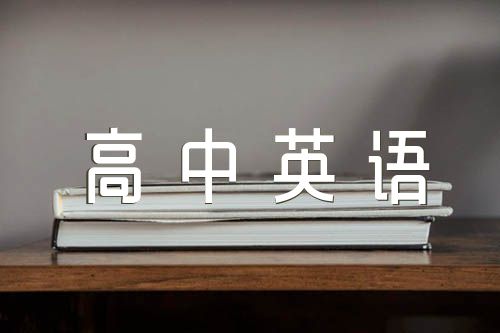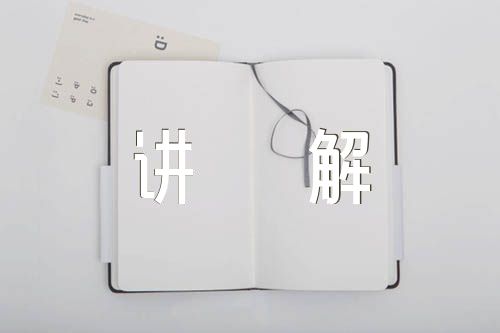【www.jianqiaoenglish.com--英语语法】
以下是小编收集整理的中考英语语法目录(合集5篇),仅供参考,希望能够帮助到大家。
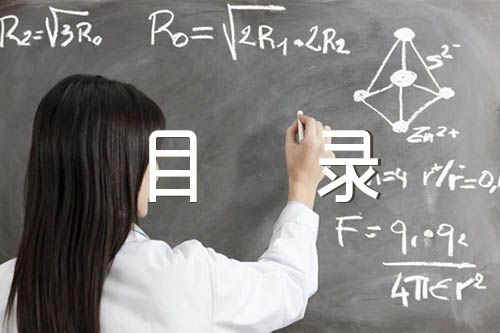
第1篇: 中考英语语法目录
物主代词
1、物主代词是表示所有关系的代词,也可叫做代词所有格。根据其句法作用,物主代词可以分为形容词性和名词性两种,见下表:
人称 单数 复数
形容词性 名词性 形容词性 名词性
第一人称 my mine our ours
第二人称 your yours your yours
第三人称 his, her, its his, hers, its their theirs
2、物主代词用法:
(1)形容词性物主代词一般位于名词前,用作定语,限定该名词的意义。例如:
i like his car. 我喜欢他的小汽车。
john cut his finger. 约翰割破了手指。
excuse me, is this your car? 对不起,这是您的车吗?
his parents are in england. 他的父母在英国。
2)名词性物主代词作主语:
may i use your pen? yours works better.
我可以用一用你的钢笔吗? 你的比我的好用。
our room is on the first floor and theirs on the second.
我们的房间在二楼,他们的房间在三楼。
ours is a big family. 我们时一个大家庭。
(3)名词性物主代词作宾语:
you may use my pen. i’ll use hers.
你可以用我的笔,我用她的好了。
i love my motherland as much as you love yours.
我爱我的祖国就像你爱你的祖国一样深。
ley’s clean their room first and ours later.
咱们先打扫他们的房间,然后再打扫我们的房间。
(4) 名词性物主代词作表语:
the life i have is yours. it"s yours. it"s yours. 我的生命属于你,属于你,属于你。
this is tom’s cap, not yours. 这是汤姆的帽子,不是你的。
this umbrella is yours and that one is hers. 这把伞是你的,那把是她的。
(5) 名词性物主代词与of连用:
he is a close friend of ours. 他是我们的一位亲密朋友。
this is no fault of yours. 这不是你的错。
this stand of ours is beyond reproach. 我们的这个立场是无可非议的。
第2篇: 中考英语语法目录
中考英语语法目录
第一节
过去进行时
第二节
现在完成时
过去完成时
第四节
宾语从句
第五节
直接引语和间接引语
第六节
时间状语从句
第七节
条件状语从句
第八节
原因状语从句
第九节
让步状语从句
第十节
目的状语从句
第十一节
结果状语从句
第十二节
比较状语从句
第十三节
主语从句
第十四节
表语从句
第十五节
定语从句
第十六节
反意疑问句
第十七节
被动语态
第十八节
虚拟语气
第十九节
倒装句
第二十节
非谓语动词
第二十一节
助动词和情态动词
第二十二节
动词短语和同义词辨析
第二十三节
主谓一致
第二十四节
名词
第二十五节
代词
第二十六节
数词
第二十七节
冠词
第二十八节
介词
第二十九节
形容词、副词及其比较级
第三十节
连词
第3篇: 中考英语语法目录
中考英语语法讲解
(一)连词概述连词是连接单词、短语或句子的一种虚词。
在句中不单独作句子成分。历年中考中常考并列连词and,but,neither nor;从属连词now that,though,when。所以了解状语从句和宾语从句的.真正意义有助于正确使用从属连词。
(二)基础知识梳理
1.并列连词用来连接彼此并列的词、短语或句子。并列连词有and,or,but,so,for,nor等。
2.关联连词有bothand,either or,neithernor,not onlybut also,as well as,as much as等。
3.连接性副词有however,therefore,besides,yet,anyway,still,all the same等。
4.并列连词和连接性副词存在以下的区别:1)连接两个独立的分句时,并列连词的位置只能放在它所引导的分句的句首,前面通常有逗号。如:I must work hard, for I still have a long way to go.They all went, but I didnt go.2)连接性副词的位置比较灵活,句中、句首、句末都可以。但是放在句首较为普遍。如:Mother was ill, therefore, she stayed at home yesterday.= Mother was ill, she therefore, stayed at home yesterday.= Mother was ill, she stayed at home yesterday, therefore.3)两个并列连词不可以连用。如:He tried hard.and but he failed to get the job.此句中的but应改为yet。因为and和but都是连词。
5.从属连词是用来引导从句,如宾语从句、状语从句、定语从句等。从属连词有that, if, unless, whether, who, whose, what, which, where, than, when, while, as, since, though, although, because, before, after, until, as soon as, now that, so...that, so that, as... as,(not) as/soas 如:If it snows tomorrow,we wont go on a picnic.(If引导条件状语从句)Could you tell me whose PC it is? (whose引导宾语从句)The man who is talking to my class teacher is my father.(who引导定语从句)
第4篇: 中考英语语法目录
英语语法是英语知识中十分重要的环节,不过毕竟英语不是我们的母语,所以想要运用得得心应手的话,还是需要多多学习的。今天我们就一起来了解一下有关英语知识中的语法知识点,希望能够对您有所帮助!
英语语法一
句子的种类
(一)按使用目的可分为陈述句、疑问句、祈使句和感叹句。
1) 陈述句(Declarative Sentences):说明一个事实或陈述一种看法。
Light travels faster than sound. 光比声速度快。(说明事实)
The film is rather boring. 这部电影很乏味。(说明看法)
2) 疑问句(Interrogative Sentences):提出问题。有以下四种:
a. 一般疑问句(General Questions):
Can you finish the work in time?
你能按时完成工作吗?
b. 特殊疑问句(W Questions; H Questions):
Where do you live? 你住那儿?
How do you know that? 你怎么知道那件事?
c. 选择疑问句(Alternative Questions):
Do you want tea or coffee?
你是要茶还是要咖啡?
d. 反意疑问句(Tag-Questions):
He doesn"t know her, does he?
他不认识她,对不对?
3) 祈使句(Imperative Sentences):提出请求,建议或发出命令,例如:
Sit down, please. 请坐。
Don"t be nervous! 别紧张!
4) 感叹句(Exclamatory Sentences):表示说话人惊奇、喜悦、愤怒等情绪,例如:
What good news it is! 多好的消息啊!
(二)句子按其结构可以分为以下三类:
1) 简单句(Simple Sentences):只包含一个主谓结构句子叫简单句,例如:
She is fond of collecting stamps. 她喜欢集邮。
(主) (谓)
2) 并列句(Compound Sentences):包含两个或两个以上主谓结构的句子叫并列句,句与句之间通常用并列连词或分号来连接,例如:
The food was good, but he had little appetite。
(主) (谓)(主)(谓)
食物很精美,但他却没什么胃口。
3) 复合句(Complex Sentences):包含一个主句从句和一个或几个从句的句子叫复合句,从句由从属连词引导,例如:
The film had begun when we got to the cinema。
主句 从句
我们到达电影院的时候,电影已经开演了。
(三)基本句型(Basic Sentence Patterns):英语中千变万化的句子归根结底都是由以下五种基本句型组合、扩展、变化而来的:
1)主 + 动(SV)例如:
I work. 我工作。
2)主 + 动 + 表(SVP)例如:
John is busy. 约翰忙。
3)主 + 动 + 宾(SVO)例如:
She studies English. 她学英语。
4)主 + 动 + 宾 + 补(SVOC)例如:
Time would prove me right. 时间会证明我是对的。
5)主 + 动 + 间宾 + 直宾(SVOiOd)例如:
My mother made me a new dress. 我母亲给我做了一件新衣裳。
英语语法二
must的用法
1) must用在肯定句中表示较有把握的推测,意为“一定”。
2) must表对现在的状态或现在正发生的事情的推测时, must 后面通常接系动词be 的原形或行为动词的进行式。
You have worked hard all day.You must be tired. 你辛苦干一整天,一定累了。(对现在情况的推测判断)
He must be working in his office. 他一定在办公室工作呢。
比较:
He must be staying there.
他现在肯定呆在那里。
He must stay there。
他必须呆在那。
3) must 表示对已发生的事情的推测时,must 要接完成式。
I didn"t hear the phone. I must have been asleep. 我刚才没有听到电话,我想必是睡着了。
4) must表示对过去某时正发生的事情的推测,must 后面要接不定式的完成进行式。
---Why didn"t you answer my phone call?
---Well, I must have been sleeping, so I didn"t hear it。
5) 否定推测用can"t。
If Tom didn"t leave here until five o"clock, he can"t be home yet. 如果汤姆五点才离开这儿,他此时一定还未到家。
英语语法三
比较have to和must
1) 两词都是"必须"的意思,have to 表示客观的需要, must 表示说话人主观上的看法,既主观上的必要。
My brother was very ill, so I had to call the doctor in the middle of the night. 我弟弟病得很厉害,我只得半夜里把医生请来。(客观上需要做这件事)
He said that they must work hard. 他说他们必须努力工作。(主观上要做这件事)
2) have to有人称、数、时态的变化,而must只有一种形式。但must 可用于间接引语中表示过去的必要或义务。
He had to look after his sister yesterday。
3) 在否定结构中: don"t have to表示“不必” mustn"t表示“禁止”,
You don"t have to tell him about it. 你不一定要把此事告诉他。
You mustn"t tell him about it. 你一定不要把这件事告诉他。
比较may和might
1) 表示允许或请求;表示没有把握的推测;may 放在句首,表示祝愿。
May God bless you!
He might be at home。
注意: might 表示推测时,不表示时态。只是可能性比may 小。
2) 成语: may/might as well,后面接不带to 的不定式,意为“不妨”。
If that is the case, we may as well try。
典型例题
Peter ___come with us tonight, but he isn"t very sure yet。
A. must B. may C. can D. will
答案B. 表可能性只能用may. 此句意可从后半句推出。
第5篇: 中考英语语法目录
中考最新英语语法知识点汇总
1.一般现在时的用法
1) 经常性或习惯性的动作,常与表示频腮度的时间状语连用。
时间状语: every…, sometimes, at…, on Sunday
I leave home for school at 7 every morning.
2) 客观真理,客观存在,科学事实。
The earth moves around the sun.
Shanghai lies in the east of China.
3) 表示格言或警句中。
Pride goes before a fall. 骄者必败。
注意:此用法如果出现在宾语从句中,即使主句是过去时,从句谓语也要用一般现在时。
例:Columbus proved that the earth is round
4) 现在时刻的状态、能力、性格、个性。
I don’t want so much.
Ann Wang writes good English but does not speak well.
比较:Now I put the sugar in the cup.
I am doing my homework now.
第一句用一般现在时,用于操作演示或指导说明的示范性动作,表示言行的瞬间动作。再如:Now watch me, I switch on the current and stand back. 第二句中的now是进行时的标志,表示正在进行的动作的客观状况,所以后句用一般现在时。
2. 一般过去时的用法
1)在确定的过去时间里所发生的动作或存在的状态。
时间状语有:yesterday, last week, an hour ago, the other day, in 1982等。
Where did you go just now?
2)表示在过去一段时间内,经常性或习惯性的动作。
When I was a child, I often played football in the street.
Whenever the Browns went during their visit, they were given a warm welcome.
3)句型:
It is time for sb. to do sth “到……时间了” “该……了”
It is time sb. did sth. “时间已迟了” “早该……了”
It is time for you to go to bed. 你该睡觉了。
It is time you went to bed. 你早该睡觉了。
would (had) rather sb. did sth. 表示’宁愿某人做某事’
I’d rather you came tomorrow.
4) wish, wonder, think, hope 等用过去时,作试探性的询问、请求、建议等。
I thought you might have some. 我以为你想要一些。
比较:
一般过去时表示的动作或状态都已成为过去,现已不复存在。
Christine was an invalid all her life.
(含义:她已不在人间。)
Christine has been an invalid all her life.
(含义:她现在还活着)
Mrs. Darby lived in Kentucky for seven years.
(含义:达比太太已不再住在肯塔基州。)
Mrs. Darby has lived in Kentucky for seven years.
( 含义:现在还住在肯塔基州,有可能指刚离去)
注意: 用过去时表示现在,表示委婉语气。
1)动词want, hope, wonder, think, intend 等。
Did you want anything else?
I wondered if you could help me.
2)情态动词 could, would.
Could you lend me your bike?
3. used to / be used to
used to + do:“过去常常”表示过去习惯性的动作或状态,但如今已不存在。
Mother used not to be so forgetful.
Scarf used to take a walk. (过去常常散步)
be used to + doing: 对……已感到习惯,或“习惯于”,to是介词,后需加名词或动名词。
He is used to a vegetarian diet.
Scarf is used to taking a walk.(现在习惯于散步)
典型例题
---- Your phone number again? I ___ quite catch it.
---- It’s 69568442.
A. didn’t B. couldn’t C. don’t D. can’t
答案A. 本句虽没有明确的时间状语,但从语意上看 出,在听的时候没有听懂这个动作发生在过去,因此应用过去时。
4. 一般将来时
1) shall用于第一人称,常被will 所代替。
will 在陈述句中用于各人称,在争求意见时常用于第二人称。
Which paragraph shall I read first.
Will you be at home at seven this evening?
2) be going to +不定式,表示将来。
a. 主语的意图,即将做某事。
What are you going to do tomorrow?
b. 计划,安排要发生的事。
The play is going to be produced next month.
c. 有迹象要发生的事
Look at the dark clouds, there is going to be a storm.
3) be +不定式表将来,按计划或正式安排将发生的事。
We are to discuss the report next Saturday.
4) be about to +不定式,意为马上做某事。
He is about to leave for Beijing.
注意:be about to 不能与tomorrow, next week 等表示明确将来时的时间状语连用。
5. be going to / will
用于条件句时, be going to 表将来
will 表意愿
If you are going to make a journey, you’d better get ready for it a s soon as possible.
Now if you will take off your clothes, we will fit the new clothes on you in front of the mirror.
6. be to和be going to
be to 表示客观安排或受人指示而做某事。
be going to 表示主观的打算或计划。
I am to play football tomorrow afternoon. (客观安排)
I’m going to play football tomorrow afternoon. (主观安排)
7. 一般现在时表将来
1)下列动词:come, go, arrive, leave, start, begin, return的一般现在时表将来。这主要用来表示在时间上已确定或安排好的事情。
The train leaves at six tomorrow morning.
When does the bus star? It stars in ten minutes.
2)倒装句,表示动作正在进行,如:
Here comes the bus. = The bus is coming.
There goes the bell. = The bell is ringing.
3)在时间或条件句中。
When Bill comes (不是will come), ask him to wait for me.
I’ll write to you as soon as I arrive there.
4)在动词hope, take care that, make sure that等后。
I hope they have a nice time next week.
Make sure that the windows are closed before you leave the room.
11. 用于现在完成时的句型
1)It is the first / second time… that…结构中的从句部分,用现在完成时。
It is the first time that I have visited the city.
It was the third time that the boy had been late.
2)This is the… that…结构,that 从句要用现在完成时。
This is the best film that I’ve (ever) seen.
这是我看过的最好的电影。
This is the first time (that) I’ve heard him sing. 这是我第一次听他唱歌。
典型例题
(1) ---Do you know our town at all?
---No, this is the first time I ___ here.
A. was B. have been C. came D. am coming
答案B. This is the first time 后面所加从句应为现在完成时,故选B.
(2) ---Have you ____ been to our town before?
---No, it’s the first time I ___ here.
A. even, come B. even, have come C. ever, come D. ever, have come
答案D. ever意为曾经或无论何时,反意词为never,此两词常用于完成时。 This is the largest fish I have ever seen. It is / was the first time +that-clause 的句型中,从句要用完成时。
注意:非延续性动词的否定形式可以与表示延续时间的"状语连用。即动作不发生的状态是可以持续的。
(错)I have received his letter for a month.
(对)I haven’t received his letter for almost a month.
12. 比较since和for
Since 用来说明动作起始时间,for用来说明动作延续时间长度。
I have lived here for more than twenty years.
I have lived here since I was born
My aunt has worked in a clinic since 1949.
Some new oilfields have been opened up since 1976.
I have known Xiao Li since she was a little girl.
My brother has been in the Youth League for two years.
I have not heard from my uncle for a long time.
注意:并非有for 作为时间状语的句子都用现在完成时。
I worked here for more than twenty years.
(我现在已不在这里工作。)
I have worked here for many years.
(现在我仍在这里工作。)
小窍门: 当现在完成时+一段时间,这一结构中,我们用下面的公式转化,很容易就能排除非延续动词在完成时中的误使。
1) (对) Tom has studied Russian for three years.
= Tom began to study Russian three years ago, and is still studying it now.
2) (错) Harry has got married for six years.
= Harry began to get married six years ago, and is still getting married now.
显然,第二句不对,它应改为 Harry got married six years ago. 或 Harry has been married for six years.
13. since的四种用法
1) since +过去一个时间点 (如具体的年、月、日期、钟点、1980, last month, half past six)。
I have been here since 1989.
2) since +一段时间+ ago
I have been here since five months ago.
3) since +从句
Great changes have taken place since you left.
Considerable time has elapsed since we have been here.
4) It is +一段时间+ since从句
It is two years since I became a postgraduate student.
被动语态的几种类型
1)主语句中有一个宾语的被动语态,如:
He saw her in the shop yesterday.
She was seen in the shop yesterday.
2) 主语有两个宾语的被动语态
Li Lei gave me a chemistry book.
I was given a chemistry book by Li Lei.
A chemistry book was given to me by Li Lei.
3)主动句中含宾语补足语的句子的被动语态
若宾语补足语是不带to 的不定式,变为被动语态时,该不定式前要加“to”.此类动词为
感官动词:feel, hear, help, listen to, look at, make, observe, see, notice, watch
The teacher made me go out of the classroom.
-->I was made to go out of the classroom (by the teacher)。
We saw him play football on the playground.
-->He was seen to play football on the playground.
若宾语补足语是带to的不定式,那么被动语态仍保留to:
Mother told me not to be late
I was told not to be late by mother.
5)情态动词+ be +过去分词,构成被动语态。
Coal can be used to produce electricity for agriculture and industry.
6)表示“据说”或“相信” 的词组
n believe, consider, declare, expect, feel , report, say, see, suppose, think, understand
It is said that… 据说
It is reported that… 据报道
It is believed that… 大家相信
It is hoped that… 大家希望
It is well known that… 众所周知
It is thought that… 大家认为
It is suggested that… 据建议
It is taken granted that… 被视为当然
It has been decided that… 大家决定
It must be remember that…务必记住的是
It is said that she will leave for Wuhan on Tuesday.
14. 延续动词与瞬间动词
1) 用于完成时的区别
延续动词表示经验、经历; 瞬间动词表示行为的结 果,不能与表示段的时间状语连用。
He has completed the work. 他已完成了那项工作。 (表结果)
I’ve known him since then. 我从那时起就认识他了。(表经历)
2) 用于till / until从句的差异
延续动词用于肯定句,表示“做……直到……” 瞬间动词用于否定句,表示“到……,才……”
He didn’t come back until ten o’clock.
他到10 点才回来。
He slept until ten o’clock.
他一直睡到10点。
典型例题
1. You don’t need to describe her. I ___ her several times.
A. had met B. have met C. met D. meet
答案B. 首先本题后句强调对现在的影响,我知道她的模样,你不用描述。再次,several times告知为反复发生的动作,因此用现在完成时。
2.---I’m sorry to keep you waiting.
---Oh, not at all. I ___ here only a few minutes.
A. have been B. had been C. was D. will be
答案A. 等待的动作由过去开始,持续到现在,应用现
15. 不定式作宾语
1) 动词+ 不定式
afford aim appear agree arrange ask be decide bother care choose come dare demand desire determine expect elect endeavor hope fail happen help hesitate learn long mean manage offer ought plan prepare pretend promise refuse seem tend wait wish undertake
举例:
The driver failed to see the other car in time.
司机没能及时看见另一辆车。
I happen to know the answer to your question.
我碰巧知道你那道问题的答案。
2)动词+不定式 ; 动词+宾语+不定式
ask, beg, choose, expect , hate, help intend like, love, need prefer, prepare, promise, want, wish…
I like to keep everything tidy. 我喜欢每件东西都保持整洁。
I like you to keep everything tidy. 我喜欢你年使每件东西都保持整洁。
I want to speak to Tom. 我想和汤姆谈话。
I want you to speak to Tom. 我想让你和汤姆谈话。
3) 动词+疑问词+ to
decide, know, consider forget, learn, remember, show, understand, see, wonder, hear, find out, explain, tell
Please show us how to do that. 请演示给我们如何去做。
There are so many kinds of tape-recorders on sale that I can’t make up my mind which to buy.有这么多的录音机,我都拿不定主意买哪一种。
注意:疑问词带不定式在句中作成分时,谓语动词用单数。
The question is how to put it into practice.
问题是怎样把它付诸实施。
2. 不定式作补语
1) 动词+宾语+不定式(to do)
advise allow appoint believe cause challenge command compel consider declare drive enable encourage find forbid force guess hire imagine impel induce inform instruct invite judge know like order permit persuade remind report request require select send state suppose tell think train trust understand urge warn
例句:
a. Father will not allow us to play on the street.
父亲不让我们在街上玩耍。
b. We believe him to be guilty.
我们相信他是有罪的。
Find 的特殊用法:
Find 后可用分词做宾补,或先加形式宾语,再加形容词,最后加带to 的动词不定式。find后也可带一个从句。此类动词还有get,have.
I found him lying on the ground.
I found it important to learn.
I found that to learn English is important.
典型例题:
The next morning she found the man ___ in bed,dead.
A. lying B. lie C. lay D. laying
答案:A.find的宾语后面,用分词或分词短语,起宾语补足语作用。现在分词表达主动,也表达正在进行,过去分词表达被动。
2) to + be 的不定式结构,作补语的动词。
Acknowledge, believe, consider, think, declare(声称), discover, fancy(设想), feel find, guess, judge, imagine, know, prove, see(理解), show, suppose, take(以为), understand
We consider Tom to be one of the best students in our class.
我们认为汤姆是班上最好的学生之一。
典型例题
Charles Babbage is generally considered ___ the first computer.
A. to invent B. inventing C. to have invented D. having invented
答案:A. 由consider to do sth. 排除B、D 此句只说明发明这一个事实,不定式后用原形即可。而C为现在完成时,发明为点动词一般不用完成时,且此处也不强调对现在的影响,因此不选C.
3) to be +形容词
Seem, appear, be said, be supposed, be believed, be thought, be known, be reported, hope, wish, desire, want, plan, expect, mean…
The book is believed to be uninteresting.
人们认为这本书没什么意思。
4) there be+不定式
believe, expect, intend, like, love, mean, prefer, want, wish, undrstand
We didn’t expect there to be so many people there.我们没料到会有那么多人在哪里。
注意 : 有些动词需用as 短语做补语,如regard, think believe, take, consider.
We regard Tom as our best teacher. 我们认为汤姆是我们最好的老师。
Mary took him as her father . 玛丽把他当作自己的父亲。
16. 不定式作主语
1) It’s easy (for me) to do that.我做这事太容易了
easy, difficult, hard, important, possible, impossible, comfortable, necessary, better;
the first, the next, the last, the best, too much, too little, not enough
It’s so nice to hear your voice.
听到你的声音真高兴。
It’s necessary for you to lock the car when you do not use it.
当你不用车的时候,锁车是有必要的。
2) It’s very kind of you to help us. 他帮助我们,他真好。
Kind, nice, stupid, rude, clever, foolish, thoughtful, thoughtless, brave, considerate(考虑周到的), silly, selfish(自私的)
例句:
It was silly of us to believe him. 我们真愚蠢,竟然相信了他。
It seemed selfish of him not to give them anything. 他不给他们任何东西,这显得太自私了。
注意:1) 其他系动词如,look,appear等也可用于此句型
2) 不定式作为句子成分时,动词用单数形式。
3) 当不定式作主语的句子中又有一个不定式作表语时,不能用It is… to…的句型
(对)To see is to believe. 百闻不如一见。
(错)It is to believe to see.
4. It’s for sb.和 It’s of sb.
1)for sb. 常用于表示事物的特征特点,表示客观形式的形容词,如easy, hard, difficult, interesting, impossible等:
It’s very hard for him to study two languages. 对他来说学两门外语是很难的。
2)of sb的句型一般用表示人物的性格,品德,表示主观感情或态度的形容词,如good, kind, nice, clever, foolish, right.
It’s very nice of you to help me. 你来帮助我,你真是太好了。
for 与of 的辨别方法:
用介词后面的代词作主语,用介词前边的形容词作表语,造个句子。如果道理上通顺用of,不通则用for.如:
You are nice. (通顺,所以应用of)。
He is hard. (人是困难的,不通,因此应用for.)
3) 祁使句(Imperative Sentence)
祈使句往往是用来表示说话人的请求、命令、要求、建议,等等。祈使句的主语常被省略,因为这个主语很明确地是听话人“you”.当然,有时为了强调或表示某种感情,句子也会带上主语。
祈使句的谓语用动词原形;它的否定形式是句首用Don"t + 动词原形,或是Not to + 动词原形。例如:
Be quiet , please ! (大家)请安静。
Stand up ! 起立!
Don"t smoke in the office . 请不要在办公室吸烟。
Don"t be standing in the rain . 别站在雨里。
Not to be careless when you"re driving a car . 开车时不要粗心大意。
4) 感叹句(Exclamatory Sentence)
感叹句表示说话人的喜悦、气愤、惊讶等强烈的情绪。这类句子中,有很多是由What或How引起的。What 用来强调名词,How则强调形容词、副词或动词。这类句子的构成只需将所强调或是说,所感叹的对象放到句首;句子无需倒装,句子要用正常语序。 当然,如果不用这种句型,而句子(无论是那种句子)本身又表示了上述的种种情绪,那么该句也就成了感叹句。例如:
What a fine day it is today ! 今天天气多好啊!
How fine it is today ! 今天天气多好啊!
What a lovely son you have !你有个多可爱的儿子啊!
How lovely your son is ! 你的儿子多可爱




